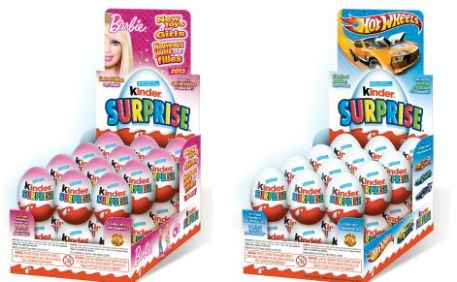It’s that time of year again: April Fool’s Day, a day dedicated to practical jokes and pranks. To commemorate the occasion, we here at SFC are going to talk about a trend that, well, we wish was a joke: taking what was once a gender neutral toy and making it “for girls!” We’ve talked about gender-segregated marketing before. It’s by no means a new trend in toy production and advertising, but it seems that in the past year there’s been a rise in targeted spin-offs of toys that were once considered largely gender neutral.
Our first case in point is Lego’s new line, Lego Friends, a renewed attempt by the company to create a line of toys marketed exclusively to girls. Like many girls’ toys before them, the new Lego Friends sets have been injected with pink and purple, and feature stereotypically “girly” environments such as a beauty salon, a bakery, and a pool (a saving grace and advancement on earlier gendered offerings is that there’s also karate class, soccer practice, and inventor’s workshop sets. They’re still pink, though). And it seems Lego is profiting enormously from this “pinkification": Lego’s overall sales rose 25% last year, and sales of Lego Friends sets were three times higher than originally expected.
With Lego Friends being met with such financial success, it’s hardly a surprise that Kinder Surprise has also jumped onto the “for girls!” bandwagon. Kinder, which once packaged refreshingly gender-neutral puzzles, Smurf figurines, and put-together toys in a chocolaty shell, has decided that they too need to cash in by dividing their offerings. Last summer, the company started rolling out Kinder Surprise eggs wrapped in pink packaging, containing Barbie and Winx Club figurines. A split from the original line (which has tellingly not been labelled "for boys!" even if that is now implied), the girls' line is everything you'd expect from the kind of marketing team that thinks that girls couldn't possibly enjoy building something that isn't wearing a dress. There’s no word yet on how successful this new line is, but we suspect that, like Lego Friends, they’ll sell like delicious, stereotypical hotcakes.
The reason we wish that the development and success of these new ultra-pink toys was a joke? As Pinkstinks puts it, “girls’ products overwhelmingly focus on being pretty, passive and obsessed with shopping, fashion and makeup - this promotes a dangerously narrow definition of what it means to be a girl.” There are a multitude of ways to be a girl; traditionally feminine and masculine values are not mutually exclusive. A girl can be a race car driver if she wants, just as a boy can be a stylist, and vice versa. Children are often told that they can be anything they wish, but when toys limit a child's imaginative play to a few standard scenarios, is it any wonder that these wishes are limited accordingly?
We just wish that Lego and Kinder, ostensibly two of the more imaginative toy creators in the business, would have thought of that before gendering their once universal toys.


No comments:
Post a Comment